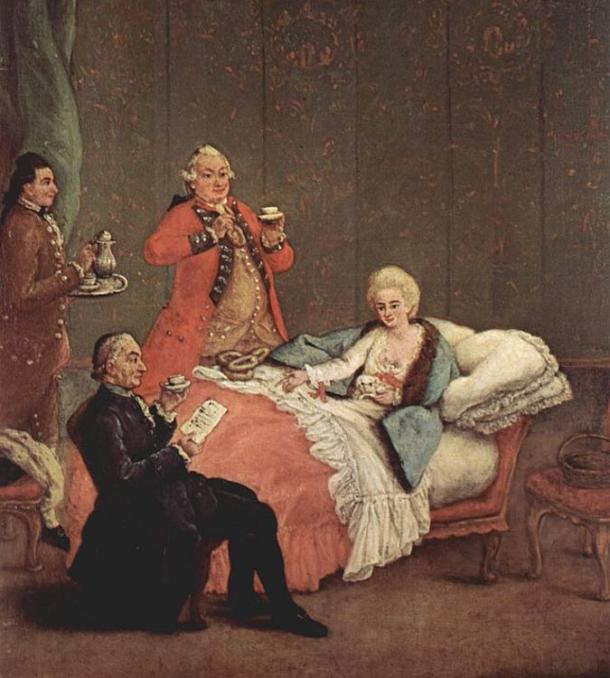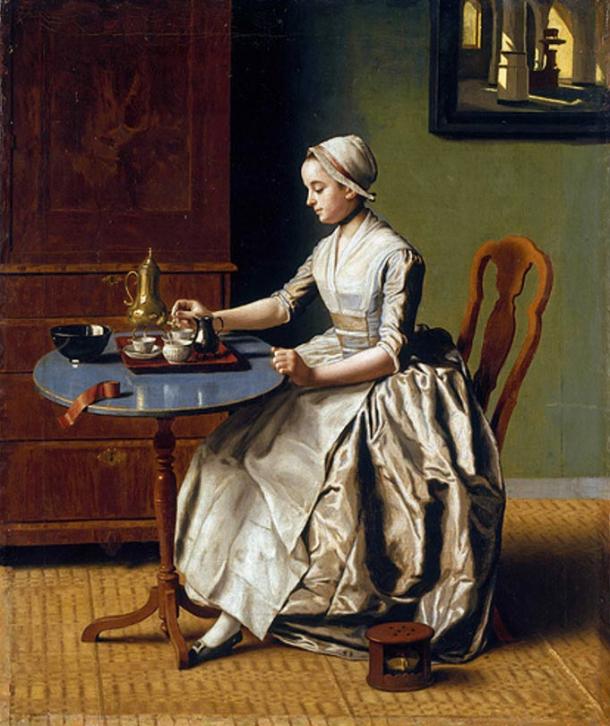Toroid
Founding Member
The link has an interesting history of chocolate and a list of other research links. According to Corey Goode, Michael Salla and Kent Dunn chocolate is a space commodity. It's commonly traded between races since they claim there's no money in space and everything is based on trade. If the claim is true then when did chocolate become a trade item for off world civilizations? Is it within our recorded history? Chocolate comes from the cacao tree and the earliest known use was between 1400 & 1100 BC. The Aztecs made a cacao drink and the pulp was fermented into an alcoholic beverage. It's suggested they could have acquired the recipe from an earlier Mesoamerican civilization or the Olmecs.
The Ancient History of Chocolate, Gift of the Gods
The Ancient History of Chocolate, Gift of the Gods
In today’s society, chocolate is a commonly available food product, and comes in many forms, including blocks, paste and powder. Several centuries ago, however, chocolate was considered a luxury item, and came only in one form – as a drink.
The Origins of Cacao
Chocolate is produced from the cacao tree, which is native to Central and South America. Based on chemical analysis, the earliest known consumption of cacao may be dated back to between 1400 and 1100 BC. At that early stage, it was not the cacao seeds, but the pulp of the fruit that was used. The sweet pulp was fermented so as to produce an alcoholic beverage. It was only later on that the cacao seeds were used. Still, it was much different from the chocolate we are used to today.

A cacao tree with fruit pods in various stages of ripening. Public Domain
When the Spanish conquistadors came into contact with the Aztec civilization, they also came across the cacao drink. Incidentally, ‘chocolate’ is derived from the word xocolātl, which means ‘bitter water’ in Aztec. Although chocolate has its origins in the Aztec language (formally known as Nahuatl), it has been suggested that the Aztecs may have inherited the recipe from earlier Mesoamerican civilizations, such as the Mayans or the Olmecs.
Cacao seeds were fermented, roasted, and ground into a paste. The cacao paste would then be mixed with water or wine, ground maize and a variety of flavorings. These flavorings include chili pepper, vanilla, allspice and honey. The mixture would then go through a process called frothing, in which it is poured back and forth from pot to cup until a deep foam was formed on the top.
MORE
Ancient Uses
- Possible sacred maize object found in stream at Olmec site
- Immortality, the Elixir of Life and the Food of the Gods
- Neanderthals may have been the first to boil their food
Not necessarily for everyday consumption, cacao was of great value, symbolically and economically. Pods were used in trade to the point where they were sometimes counterfeited by filling the plant pods with soil. The ‘bitter water’ was consumed by nobles and warriors, in a ritual with purpose and solemnity. It was believed the plant was of the gods, associated by the Aztecs with Quetzalcoatl.

Aztec. Man Carrying a Cacao Pod, 1440–1521. Volcanic stone, traces of red pigment. Brooklyn Museum/Wikimedia Commons
Chocolate was such an important part of life that it was used in special ancient Mayan ceremonies such as weddings, funerals, and religious rituals. And a study of pictorial representations of chocolate in 2018 suggests that it may have served another purpose in the economy of the Mayan civilization – as money.
Joanne Baron, an archaeologist with the Bard Early College Network, found that murals from the 8th century onward depict people bartering chocolate for other goods, such as dough, and also offering leaders roasted cacao beans as tribute. Baron has noted some 180 images of this kind. She notes in the journal Anthro Source , that cacao beans, ‘originally valued for their use in status display, took on monetary functions within a context of expanding marketplaces among rival Maya kingdoms’.
Chocolate Arrives in Europe
When cacao was brought to Europe by the Spanish, the drink was transformed by an ingredient not available to the Aztecs – sugar. This made the taste of the drink more appealing, and became popular among the Spanish nobility and officials of the Roman Catholic Church. It was only later that chocolate became popular in other European courts, as the Spanish seemed to have been keeping the secret of chocolate to themselves.
In France, for instance, the marriage of Anne of Austria to Louis XIII in 1615 popularized the drink among the French aristocracy, as the queen was a chocolate enthusiast. Chocolate had a harder time penetrating the markets of Protestant England, however, as the drink was associated with popery and idleness. Eventually, the craze for chocolate also hit London, though it did not really catch on. Still, several ‘chocolate houses’ sprang up in London, where the elites of society could indulge in decadence and rowdy behavior.

Chocolate soon became a fashionable drink of the nobility after the discovery of the Americas. The morning chocolate by Pietro Longhi ; Venice, 1775–1780. Public Domain
New Ways of Production and Consumption
It was during the Industrial Revolution of the 18 th and 19 th centuries that a change in the way people consumed chocolate occurred. Firstly, the invention of hydraulic and steam chocolate mills in France in the 18 th century allowed chocolate to be processed faster and at a lower cost. Then, in 1828, the cocoa press was invented by Coenraad Johannes Van Houton. This machine removed the fat from the cacao seeds to produce cocoa powder, the basis for most chocolate products today. With this new ingredient, chocolate could be produced in the many forms we are familiar with today. These technological advances also resulted in a higher demand for raw cocoa in Europe. Soon, cocoa trees were planted as a cash crop in British, French and Dutch colonies near the equator, where the natural conditions were suitable for these trees.

A Lady Pouring Chocolate (1744) depicting drinking chocolate paraphernalia. Public Domain
The Bitter Side of the Chocolate Story
As one may expect, the workers on these cocoa plantations were often slaves. It may be surprising to some, however, that such labor is still being used today by the chocolate industry. It has been claimed that children are being used as slaves on cocoa plantations in West Africa, in particular the Ivory Coast and Ghana, where cocoa is an important export crop. This cocoa would eventually end up as the chocolates on the shelves of our convenience stores and supermarkets. It is indeed horrifying to think that much of the sweet chocolate we see today is being produced through the hard labor of child slaves.
Top Image: A Maya lord forbids an individual from touching a container of chocolate. Source: Public Domain
Hide References
References
Garthwaite, J., 2015. What We Know About the Earliest History of Chocolate. [Online]
Available at: What We Know About the Earliest History of Chocolate | History | Smithsonian
Green, M., 2013. The surprising history of London's lost chocolate houses. [Online]
Available at: http://www.telegraph.co.uk/travel/d...history-of-Londons-lost-chocolate-houses.html
Gregory, A., 2013. Chocolate and Child Slavery: Say No to Human Trafficking this Holiday Season. [Online]
Available at: Chocolate and Child Slavery: Say No to Human Trafficking this Holiday Season | HuffPost
Righthand, J., 2015. A Brief History of the Chocolate Pot. [Online]
Available at: A Brief History of the Chocolate Pot | At the Smithsonian | Smithsonian
The Field Museum, 2007. All About Chocolate: History of Chocolate. [Online]
Available at: Chocolate - All About Chocolate - History of Chocolate
University of Pennsylvania Museum of Archaeology and Anthropology, 2007. The Earliest Chocolate Drink of the New World. [Online]
Available at: http://web.archive.org/web/20071202095415/http://www.museum.upenn.edu/new/news/fullrelease.php?which=306
Wilson, B., 2009. Aztecs and cacao: the bittersweet past of chocolate. [Online]
Available at: Aztecs and cacao: the bittersweet past of chocolate
www.foodispower.org, 2015. Child Labor and Slavery in the Chocolate Industry. [Online]
Available at: Child Labor and Slavery in the Chocolate Industry | Food Empowerment Project


